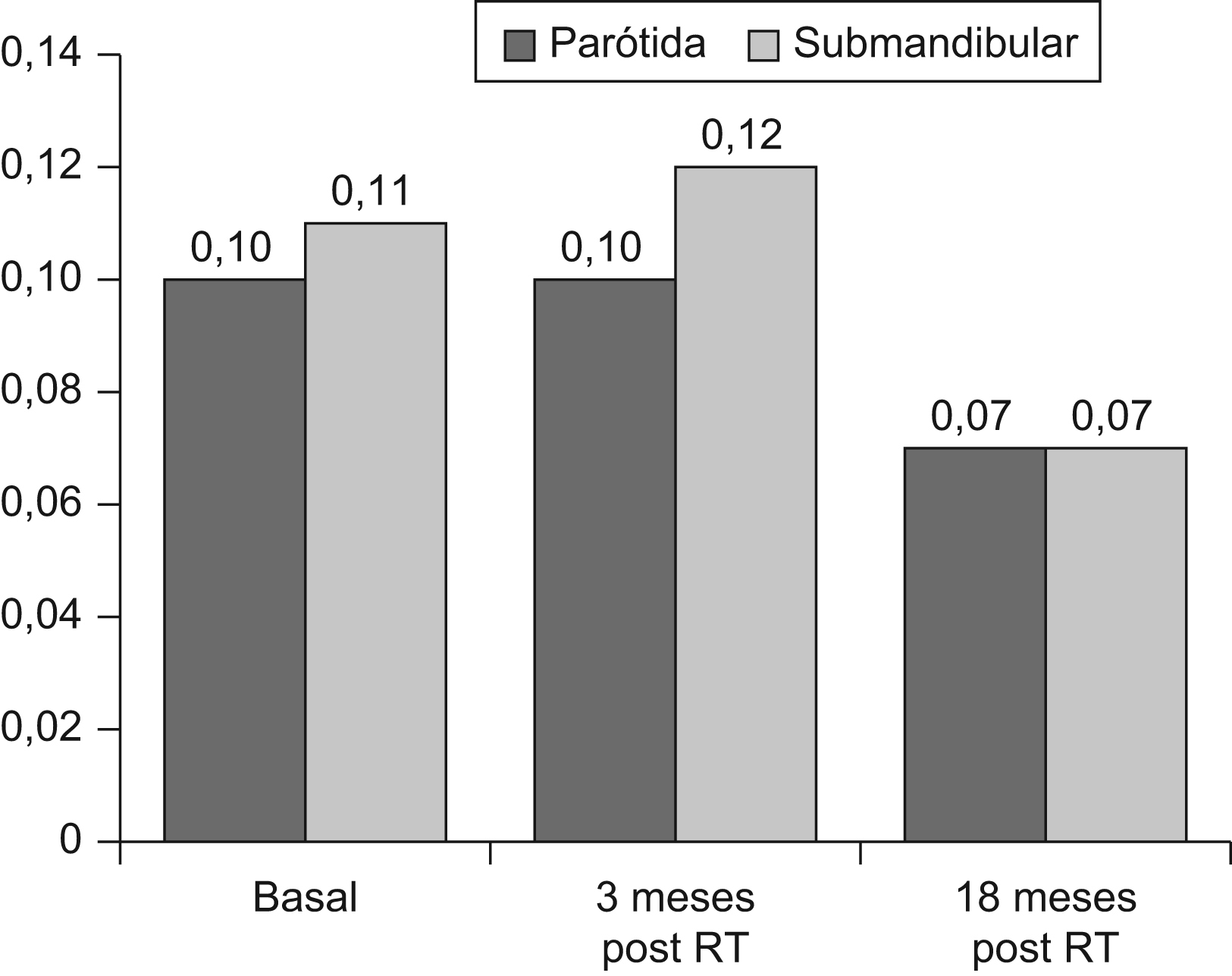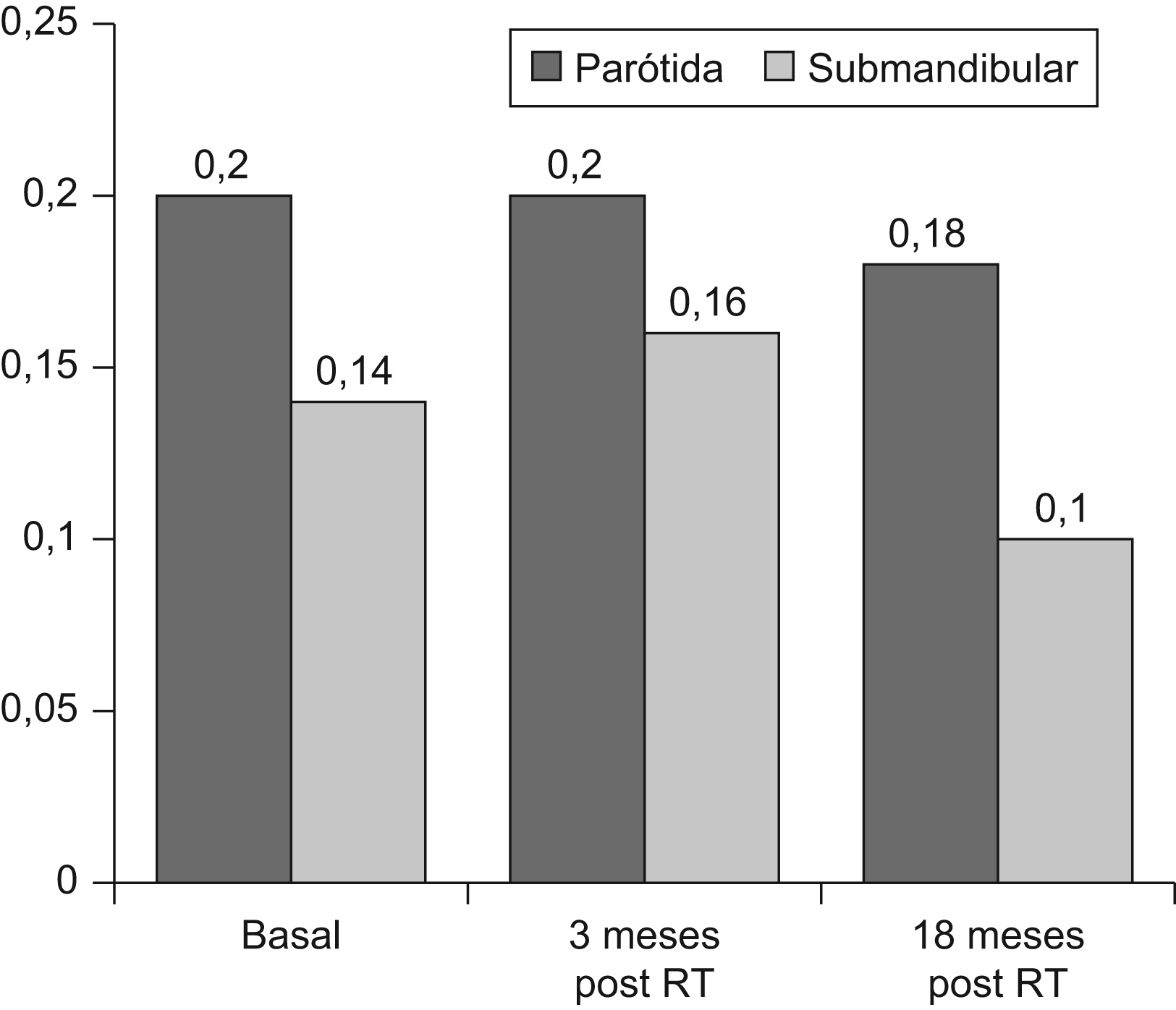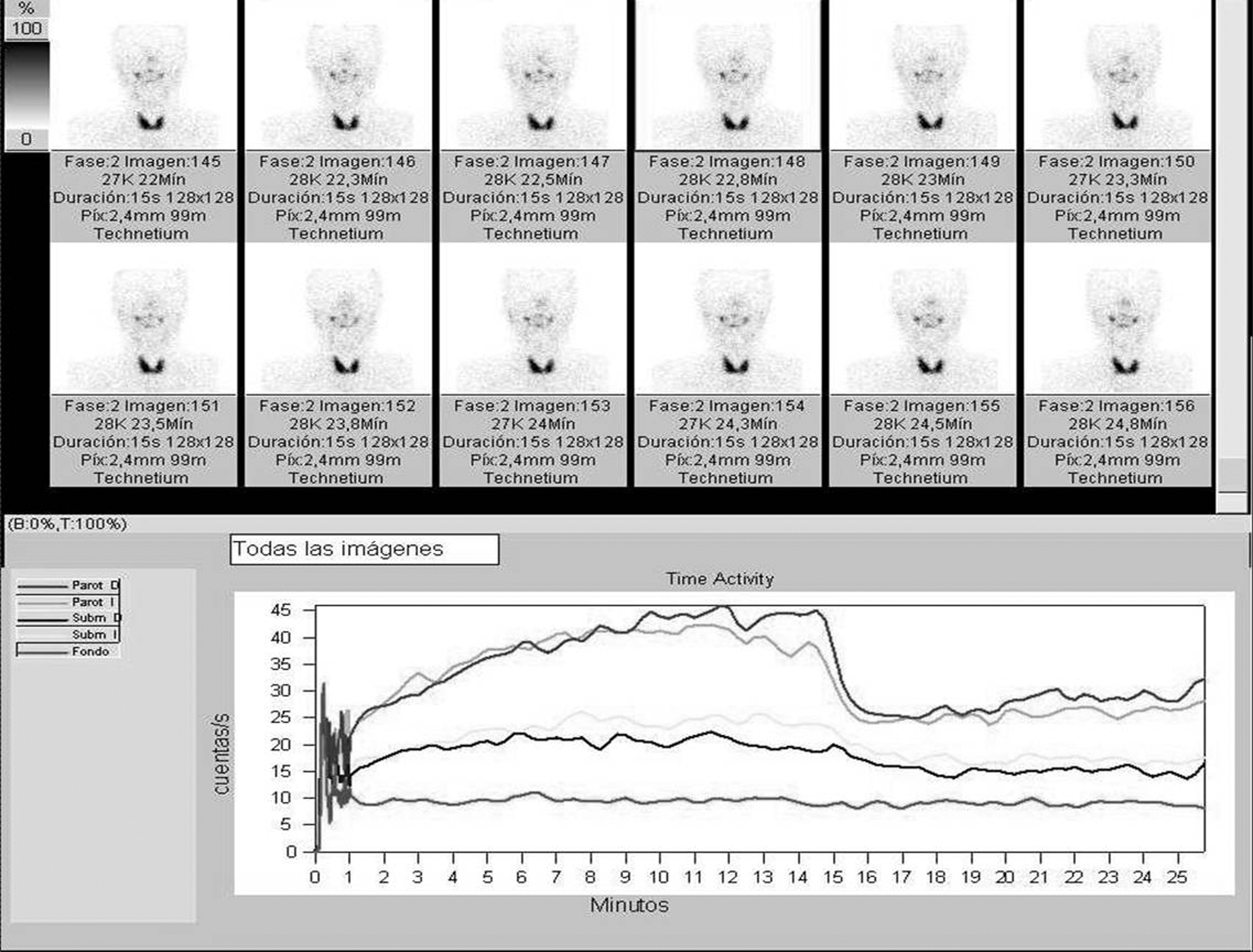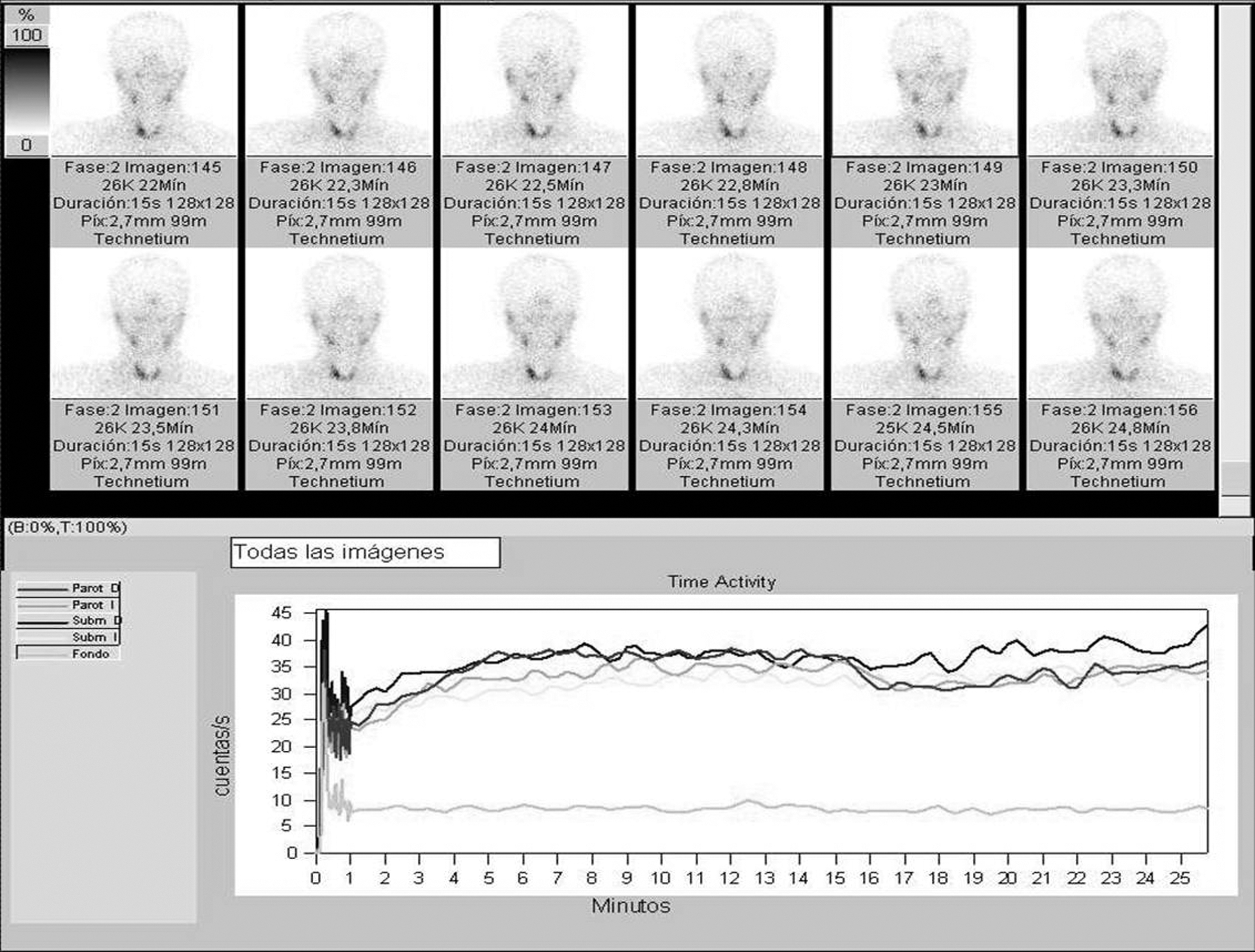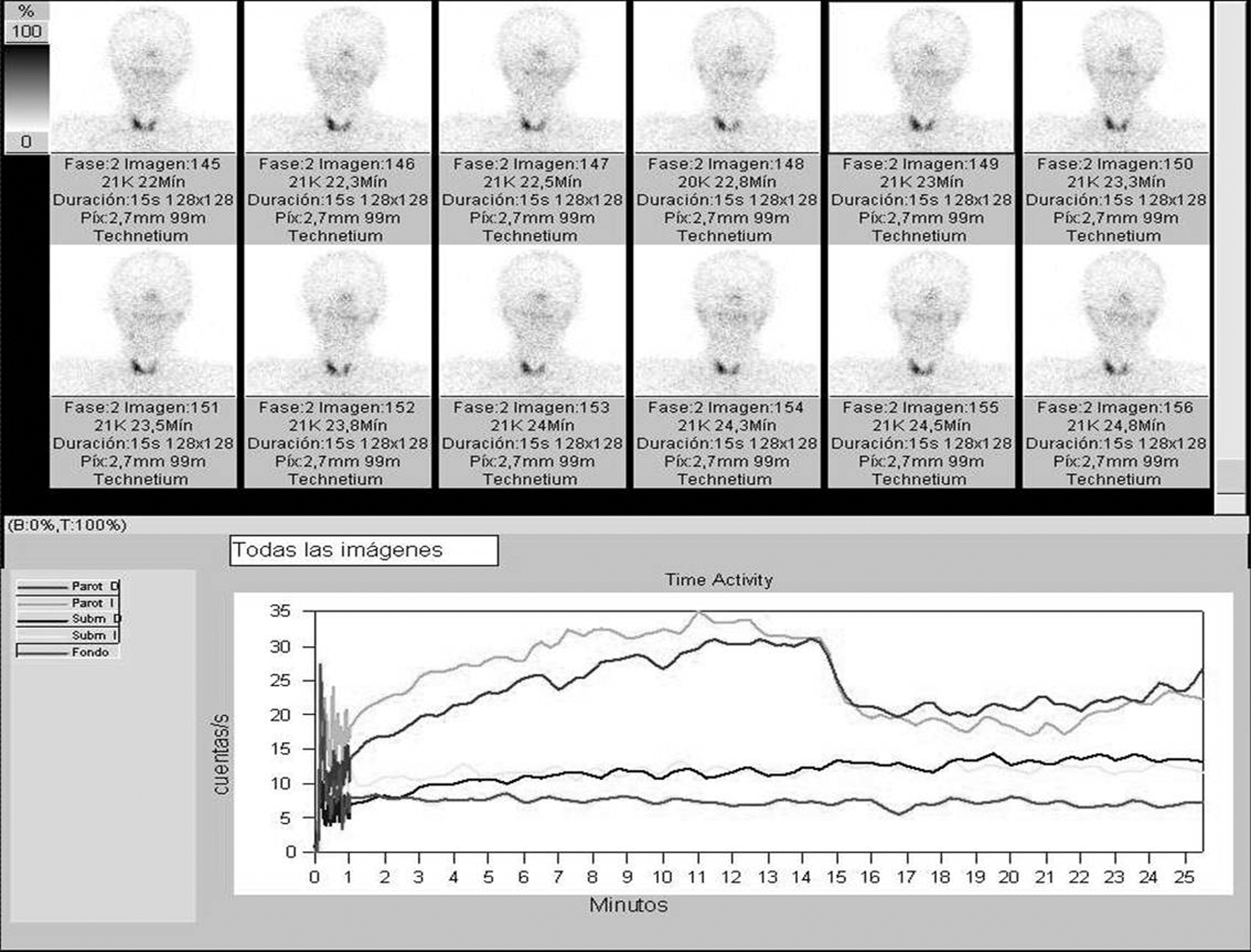Determinar el papel de la gammagrafía salival (GS) cuantitativa en la detección de alteraciones funcionales de las glándulas salivales en pacientes con cáncer de cabeza y cuello tratados con radioterapia (RT).
Material y métodosSe estudió a 19 pacientes (17 varones) con edad media de 62,4 años (44–75). Se realizaron tres estudios a cada paciente: basal, a los 3 y a los 18 meses tras la RT. La gammagrafía salival se realizó con 3,7MBq/kg de 99mTc-pertecnetato durante 25 minutos y zumo de limón al final del minuto 15. Se calculó la fracción de excreción (FE), las cuentas máximas/minuto/píxel/MBq (CMPM), el porcentaje de captación a partir de las curvas actividad/tiempo de áreas de interés sobre ambas glándulas parótidas (GP) y glándulas submaxilares (GSM) y la influencia de las dosis recibidas por las parótidas.
ResultadosLa FE mostró una disminución significativa del estudio basal a los 3 meses (p<0,001), tanto en las GP como en las GSM, y a los 18 meses en las GSM (p<0,001). Se observó un aumento significativo de la FE del estudio a los 3 meses al de los 18 meses (p<0,05).
La CMPM no cambió significativamente en las GP desde el estudio basal a los de 3 y 18 meses, pero sí en las GSM con disminución significativa (p<0,01) desde el estudio basal al de 18 meses. El porcentaje de captación no cambió significativamente. Se observó correlación moderada entre la dosis a parótidas y los parámetros a los 3 meses post-RT (p<0,05).
ConclusionesLa FE presentó mayor sensibilidad que la captación al efecto de la RT sobre la función salival, mostrando, además, recuperación funcional a lo largo del tiempo en las GP.
To assess the role of quantitative salivary gland scintigraphy (SGS) in the detection of functional impairment of salivary glands in patients with head and neck cancer treated with radiotherapy (RT).
Material and methodsWe studied 19 patients (17 men), mean age 62.4 years (44–75). Three studies were performed to each patient: baseline, 3 and 18 months after RT. SGS was acquired for 25 minutes following injection of 3.7MBq/kg of 99mTc-pertechnetate with lemon juice at the end of minute 15.
Excretion fraction (EF), counts per minute/pixel/MBq (CMPM) and uptake percentage were obtained from time-activity curves from ROIs placed over parotid (PG) and submandibular glands (SMG) and related to the doses received by the PG.
ResultsEF showed a significant reduction from the baseline to the 3 months study (p<0.001) for the PG and SMG and from the baseline to the 18 months study for the SMG (p<0.001). A significant improvement of EF was seen from the 3 months to the 18 months study for the PG (p<0.05).
CMPM did not change significantly from the baseline to the 3 months and 18 months studies for the PG and showed a significant reduction (p<0.01) for the SMG from the baseline to 18 months study. The uptake percentage did not change significantly between studies. A moderate association was observed between the doses to PG and the 3m study parameters.
ConclusionsEF was more sensitive than uptake in assessing post-RT impairment of salivary function. In addition, it reflected functional recovery of parotid glands over time.
Artículo
Comprando el artículo el PDF del mismo podrá ser descargado
Precio 19,34 €
Comprar ahora







